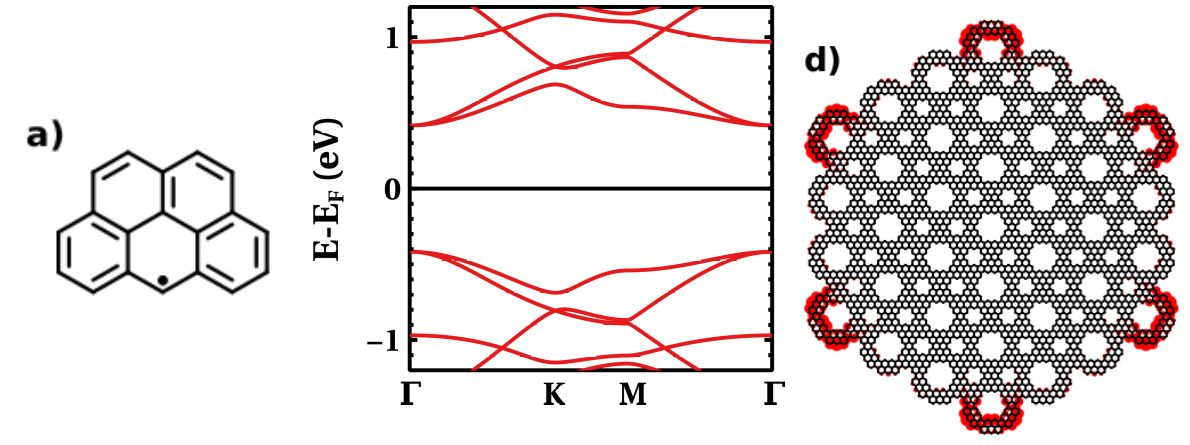Contributed talk
Monoradical nanographenes as building blocks of two-dimensional anisotropic networks
Ricardo Ortiz
Donostia International Physics Center (DIPC), E-20018 San Sebastián, Spain
Olympicene is a monoradical nanographene that lacks C3 rotational symmetry, with sublattice imbalance and one zero energy state in the non-interacting spectrum. As a consequence, a two-dimensional network of Olympicenes can be effectively mapped by anisotropic Hamiltonians. For instance, by replacing the sites of a honeycomb lattice with Olympicenes, the resulting crystal presents the bands of either Kekulé or anti-Kekulé graphene, depending on the molecule relative orientation. These two systems hold topologically protected corner modes, like the parent models, so they are examples of second-order topological insulators. The same strategy can be applied to different lattices, like the Kagome lattice, that leads to an anisotropic model with a flat band followed by a gapped Dirac cone, which is a spin-liquid candidate.
 Figure 1: Left, Olympicene chemical structure. Center, tight-binding band structure of Olympicene 2D network (t=2.7 eV). Right, finite island with topologically protected corner modes.
Figure 1: Left, Olympicene chemical structure. Center, tight-binding band structure of Olympicene 2D network (t=2.7 eV). Right, finite island with topologically protected corner modes.